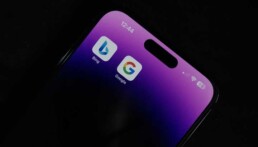5 Key Differences: Google Ads Vs Bing Ads Features
Five principal differences between Google Ads and Bing Ads are audience targeting, display formats, geographic targeting, keyword research, and cost-efficiency. Google offers a wider reach, simplistic ad formats, and more precise geographic targeting. Meanwhile, Bing provides more granular demographic preferences, and visually engaging ad formats, and allows adjustment of geographic targeting at the ad group level. Bing ads are generally cheaper, yet Google’s precise targeting could boost conversion rates. Understanding each platform’s unique features can make a significant impact on your ad campaign outcome. If you continue reading, we’ll explore these significant differences in detail.
Audience Targeting: Google Vs Bing
While both Google and Bing offer audience targeting capabilities, it’s important to understand their distinct features to utilize them effectively for your marketing strategies. Google, the more prominent platform, has a broader reach and its demographic targeting allows you to hone in on age, gender, and location. Yet, Bing shouldn’t be dismissed. Its demographic preferences are more granular, providing you with more detailed targeting capabilities.
Both platforms can be utilized to boost conversion rates, but their effectiveness can vary. Google’s extensive reach can result in higher conversion rates, but Bing’s smaller audience is often more engaged, leading to better conversions on a smaller scale.
In terms of cost, Bing generally offers a lower cost per click, but keep in mind that its audience is relatively smaller. On the other hand, Google’s cost per click tends to be higher, but it also boasts a larger audience, potentially leading to a higher return on investment.

Cost Efficiency: Bing Ads Vs Google Ads
Despite their differences in audience size, when it comes to cost efficiency, both Bing Ads and Google Ads have distinct features that could greatly impact your marketing budget.
Bing Ads, although having a smaller audience, provides a more cost-effective solution. You’ll find that the cost per click (CPC) on Bing is generally lower than Google Ads. This can be advantageous for your ad placement efficiency, allowing your campaign to reach a similar audience size at a reduced cost.
On the other hand, Google Ads, with its larger user base, often leads to higher competition and, consequently, a higher CPC. However, Google’s sophisticated targeting capabilities can result in a higher conversion rate, which might offset the cost difference.
Also, remember that the overall cost isn’t only determined by the CPC but also by the quality of traffic. It’s not about getting the most clicks; it’s about getting the most conversions. Bing users are said to have a higher engagement level, resulting in potentially higher conversion rates.
Ad Formats: Google Ads Vs Bing Ads
Shifting our focus from cost-efficiency, let’s examine the diverse ad formats offered by Google Ads and Bing Ads. Both platforms offer a variety of ad formats, however, there are notable differences that can impact your ad performance and conversion rates.
Google Ads features:
- Text Ads: These are simple and straightforward, consisting of a headline, URL, and description.
- Display Ads: This format uses images, text, or both to capture attention and is primarily used for remarketing.
- Video Ads: These ads appear on YouTube and other partner sites, offering a visual and engaging format.
On the other hand, Bing Ads mightn’t be as thorough, but they’ve unique features that can drive results. They offer:
- Expanded Text Ads: This format offers more space for your message, potentially leading to higher conversion rates.
- Product Ads: These are visually engaging and include product details and prices, making them perfect for e-commerce businesses.
- Audience Ads: Bing’s native ad format that targets users based on their interests and browsing history.
To optimize your marketing strategy, it’s crucial to understand these formats and how they can influence your ad performance and conversion rates.
Geographic Targeting: Bing Vs Google
In the domain of geographic targeting, you’ll find that both Bing and Google offer powerful tools, though they each have their unique strengths and approaches. Google’s extensive market penetration enables it to provide a global reach, important for businesses aiming to expand internationally. Its advanced algorithms and vast data resources allow you to target ads with pinpoint precision, down to the city block level. This can be particularly advantageous when local preferences play a significant role in your marketing strategy.
Bing, on the other hand, offers an advantage in terms of cost-effectiveness and less aggressive competition. While its reach may not be as expansive globally, Bing’s strength lies in its ability to penetrate niche markets. This can be beneficial if your target demographic aligns with Bing’s user base, primarily older and more affluent. Additionally, Bing allows users to adjust their geographic targeting at the ad group level, providing an additional degree of flexibility.
Keyword Research: Google Ads Vs Bing Ads
When it comes to keyword research, you’ll find that both Google Ads and Bing Ads offer robust tools, each with their distinctive benefits and utilities.
- Google Ads Keyword Planner: It’s a powerful feature that provides thorough keyword analytics and search volume data. You can uncover new keywords related to your business and see historical statistics to understand how keywords perform over time.
- Bing Keyword Research Tool: It offers similar functionality to Google’s Keyword Planner. However, Bing’s tool has an advantage of providing in-depth search volume data, not just paid. It allows for a broader understanding of the keyword landscape.
- Competitive Research: Both platforms also let you spy on your competition. You can see what keywords your competitors are bidding on, which can give you insights to refine your strategy.
In sum, both Google Ads and Bing Ads have their unique strengths. Google leads in audience targeting and offers diverse ad formats.
Bing, on the other hand, is cost-efficient and excels in geographic targeting.
For keyword research, it’s a close call between the two. Ultimately, your choice depends on your specific marketing goals, budget, and target audience.
Both platforms can bring significant results when used strategically.
